Why a Boston Teachers College Is Sending Its Students to Northern Ireland to Learn About a Child Trauma Program That Could Help U.S. Kids, Too
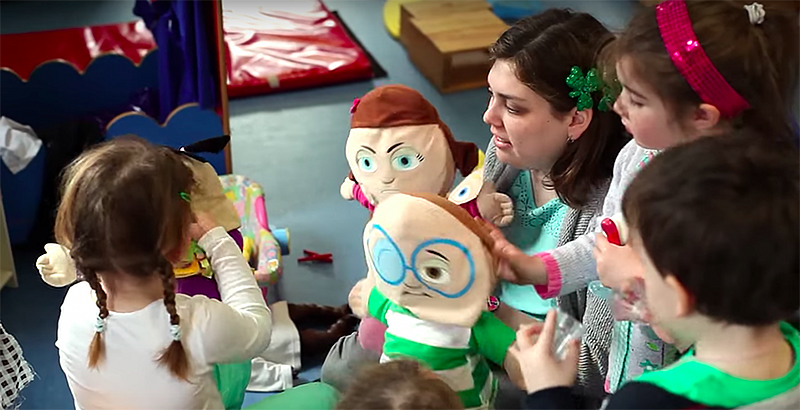
When two bombs went off at the Boston Marathon finish line in 2013, children in the city were paying attention. In day cares and schools, youngsters told their teachers they couldn’t go to the city anymore because of the bad people there, and that they couldn’t run races because they would get hurt.
But a group of Boston student-teachers was prepared to respond to just these types of fears among young children. They attended Wheelock College, a teacher training school in the city, and had just returned from Belfast, where they were learning about an early childhood curriculum created to help Northern Ireland’s youngest generation heal from the region’s 30-year sectarian conflict, known as the Troubles.
So Wheelock students put their training to work. They let the children know they were listening. They asked how the students were feeling. They answered questions but didn’t tell the young children every detail about the bombing. Most importantly, they told stories about all the people who were keeping them safe.
The Northern Ireland program is proving to be a path to peace in areas across the globe where violence has created trauma. Not only does the program serve nearly 3,000 preschools and schools in Northern Ireland and the Republic of Ireland, but it’s been adopted in other war-torn regions of the world, including Kyrgyzstan, the Balkans, and Tajikistan.
In the U.S., Wheelock is the only teacher training school that sends its students to Belfast to learn about this work. Although there hasn’t been anything resembling the Troubles in the States, trauma from poverty, racism, immigration, and violence affects small children every day, and prejudices make themselves known at a young age. But early education teachers don’t always receive social-emotional training to support their students, and preschoolers continue to be expelled and suspended from U.S. schools at high rates.
That’s why educators at Wheelock, which merged this year with Boston University, hope that their student-teachers can spread the Northern Ireland approach to healing trauma and prejudices in their own classrooms.
“All children should be getting [this education] around the world,” said Diane Levin, a professor of early childhood education at Wheelock who leads the trips to Northern Ireland. “The earlier it starts, when they get older, they’ll grow into adults who don’t look at the world in dichotomous ways: good, bad; right, wrong; good guys, bad guys. It will contribute to a more peaceful world.”
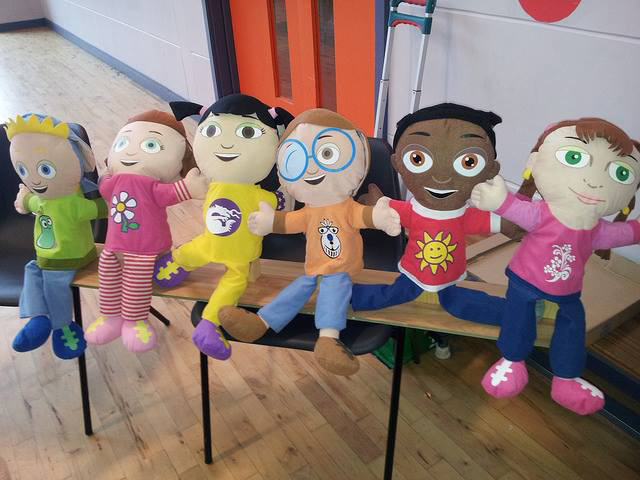
A program for peace
It was a scene that could have spelled disaster in any preschool classroom. One student was making shapes out of play dough when another walked up and ripped it out of her hands. Julie Cusano, a Wheelock student at the time who was volunteering in that Belfast classroom, watched to see what would unfold. The student whose toy had been stolen turned to a large stuffed puppet named Jenny that was sitting nearby. “Jenny thinks that’s mean and you should give it back,” she said. The other student apologized, handed back the play dough, and left.
It may seem simple, but that kind of conflict resolution is exactly what the Media Initiative for Children was intended to instill. Launched in 2004 by Early Years, a nonprofit that supports young children in Northern Ireland, and the U.S.-based Peace Initiatives Institute, the curriculum uses cartoons, puppets, and teacher professional development to help children work through conflict with peers, become more accepting of diversity, and utilize tools to express their feelings.
The work isn’t limited to schools. Cartoons air on TV, and parents are given books and finger puppets to help reinforce the curriculum. The characters represent a diverse set of backgrounds — there are Protestants, Catholics, children of different races, one with a physical disability, and one from the Gypsy community. As they play together, the characters learn that they can be friends, even if they are different.
Though the Troubles ended in 1998, research found lasting effects from the violence, even among children who were infants at the time or had not yet even been born. During three decades of guerrilla warfare, as Protestant unionists and Catholic nationalists fought over whether to remain in the United Kingdom or join the Republic of Ireland, 3,500 people were killed and 50,000 were injured.
When researchers in 2002 surveyed 352 3- to 6-year-olds on whether they showed a preference for cultural or political symbols, they found that even the youngest Catholic and Protestant children identified with names, flags, or the football jerseys of their communities. Some of the older youngsters were already making sectarian or racist statements.
The Media Initiative set about to solve this problem. With financial support from the Northern Ireland Department of Education and the European Union, Early Years has brought the program to 250 new schools every year, with nearly 3,000 using the curriculum now in Northern Ireland and the Republic of Ireland. Children as young as 2 are using the tools in day care, while students up to age 8 are using them in primary school. Siobhan Fitzpatrick, chief executive of Early Years, said the team has a goal of bringing the program to students as old as 12.
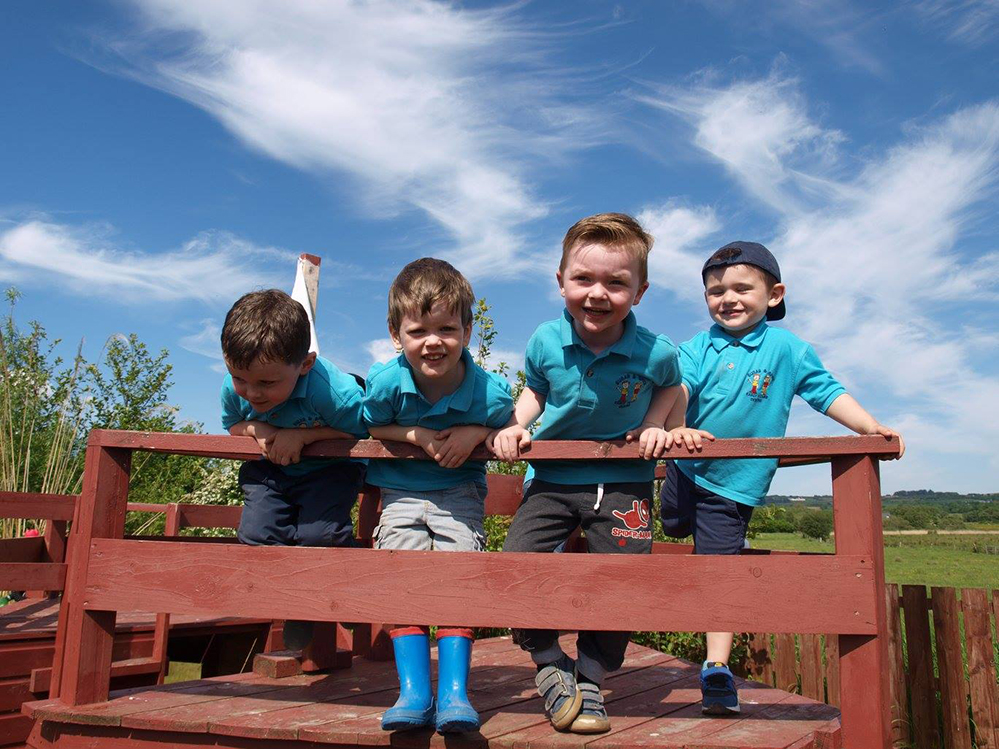
A randomized control trial of the program in 2008 found that it was having positive effects on children’s social-emotional development, cultural awareness, and ability to be inclusive. The findings were consistent across socioeconomic backgrounds and gender and between Catholics and Protestants.
Still, the need for healing from the country’s past trauma is dire. Northern Ireland has high rates of suicide, drug abuse, and alcoholism, according to a recent Politico report that looked at the lasting impact of the Troubles. Most students attend schools that are either Protestant or Catholic. Only 7 percent of the schools — 62 — are integrated, according to government data.
“It has taken and will take a long time for Northern Ireland to heal,” Fitzpatrick said. “But this type of program is helping in that healing and reconciliation process and will build a new future and a new way of being for children, families, and communities here in Northern Ireland.”
Lessons for Americans
Nearly 250 preschoolers are expelled or suspended every day in the United States, a rate significantly higher than for K-12 students. Researchers say this proves that early childhood educators aren’t trained to deal with the behavioral needs of young children.
Levin believes the U.S. has a lot to learn from Northern Ireland’s work supporting the social-emotional growth of its preschoolers.
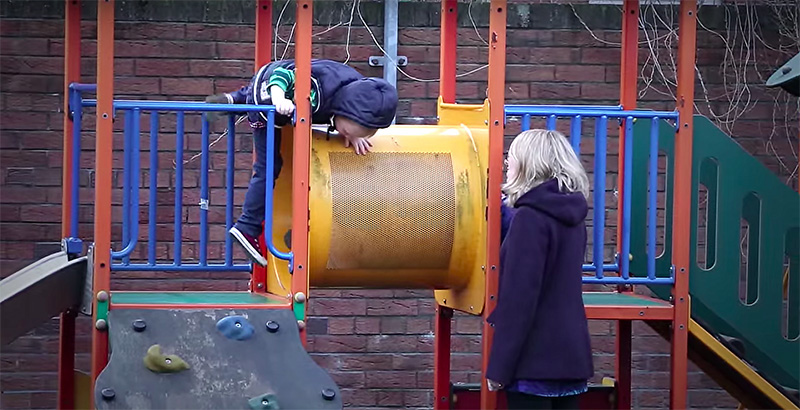
That’s why, since 2006, Wheelock has sent students every year to Belfast to learn from the Media Initiative. Levin, who brings 15 to 18 students on annual weeklong excursions, first heard about the program when she was doing international work on early education and collaborated with Early Years to develop this service learning trip.
Before Wheelock students embark, they participate in a course with Levin on the impact community violence has on children and tools that can help them heal. She teaches her students that how they react to a child’s questions or concerns plays a huge role in how that child will feel. If students talk about having heard about a shooting or bombing, adults should ask what the children know and reassure them that they are safe.
Once in Belfast, Levin’s students visit both Catholic and Protestant schools that are using the Early Years curriculum. They volunteer in the schools, visit community youth centers, and tour the city to learn more about the conflict and its lasting impact.
Sandra Bailas, who went on the trip in 2013, remembers her conversations with taxi drivers who gave tours of Belfast. They recounted the fear of living during the Troubles, describing what it was like to walk down the sidewalk with the constant terror that a bomb could detonate or someone could attack them.
“The most important thing I learned from that trip is that you can teach a new generation to not repeat their history just with the technology that the teachers used and something as simple as the puppets to show that you should treat people with respect,” Bailas said.
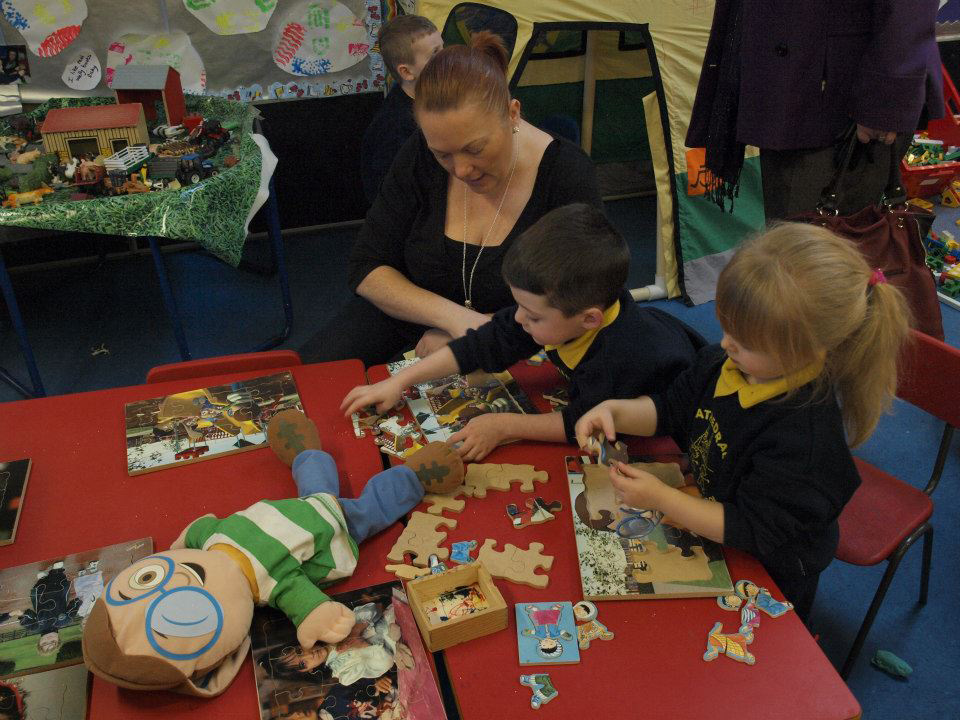
Students use the puppets to communicate feelings, but they are a temporary tool, Cusano said. She was volunteering in a Belfast classroom one day last year when a small, shy boy approached and held out a large, fabric puppet. “Jim wants to play with you,” the boy said. “Of course I’ll play with you,” she responded. The boy had to use Jim only a few more times before he felt comfortable enough to ask Cusano to play himself.
“It alleviated a lot of the pressure of establishing a connection with someone new,” she said. “Children really gravitated toward them.”
Some Wheelock alumni are already using these methods in their classrooms.
Cusano, who graduated this year, has been working in a child care center every summer since she was 15 years old. Now, she’s used the training from Northern Ireland to help children communicate with each other. When her students fight, she has them look at each other and start statements with, “It hurt my feelings when you did this.”
“I’ve been working with children for quite some time, and our children have a hard time with self-regulating and talking about their feelings,” she said. “I learned a great deal about how to approach problem-solving and talking about feelings and what makes children upset and the language that works with them.”
Megan Gelinas, who went on the trip and now teachers toddlers in a day care center, uses small finger puppets in imitation of the larger Northern Ireland puppets to help bridge the gap for students with disabilities. She said she makes up stories with the puppets and asks her students to talk about how the puppets are different and how they also are similar.
“When I have a child in a wheelchair, I say that even if he’s in a wheelchair, he is still a person and he can do what we can do, but he can just do it differently,” Gelinas said.
But could a program like this work in the U.S.?
More countries are becoming interested in the Early Years program, Fitzpatrick said, as they recognize the need to heal their youngest generation from traumas of the past. “Of course young children are influenced by what they see and hear around them and what is transmitted through the generations,” she said. “There is a powerful opportunity to break the cycle of the transmission of negative attitudes to others in those early years.”
But in the U.S., the early education system lags behind other countries’ in a number of critical areas, experts caution. There is less time for play in early childhood classrooms and much more emphasis on academics. The preschool expulsion rate is high, and early childhood teachers are often the lowest-paid educators.
All this is to say, the difference in education for young children in Northern Ireland and the United States isn’t just the absence of a specific curriculum.
That difference struck Wheelock senior Alexandra Miller most strongly when she saw posters in Belfast classrooms listing the Rights of the Child, a United Nations list of social and political rights for children that every nation in the world has adopted — except the United States.
“Northern Ireland did have these conflicts, but yet the children are treated as real people and important, and every child has a right to education and learning,” Miller said. “Trauma really impacts a child’s education and how a child goes through their day-to-day life, and without acknowledging it and pushing it aside or not doing anything about it, it hurts the child’s education.”
One way the U.S. could better support students’ overall social-emotional development is by allowing for more playtime, Levin said. Children, she said, use play to work through fears and trauma, and it’s important that adults don’t act startled or shut down playtime if they see students acting out a violent event like a shooting or robbery. Instead, adults can ask students questions as they’re playing, such as “What do you know about shootings?” and then show them play that imitates how people are taken care of after these events by suggesting, “When people are shot, doctors take care of them — now, let’s take care of the people who are hurt.”
Just as important is having attentive adults who can help children process traumatic events. Because young children’s brains are malleable, the way they learn to respond to stress and trauma can impact them for the rest of their lives. Children who experience what experts call toxic stress, or continuous stressful events without any support from adults, can become angry and fearful, acting out even when they are not threatened. Later in adult life, this can lead to depression, drug abuse, and cardiovascular disease.
“When a young child’s stress response systems are activated in the context of supportive relationships with adults, these physiological effects are buffered and return to baseline levels,” wrote researchers at the National Scientific Council on the Developing Child. “The result is the development of healthy stress response systems.”
When children witness or hear about violent events — like shootings, robberies, or terrorist attacks — part of their processing involves figuring out who the “good guy” and “bad guy” are, Levin said. It’s important for educators to give children alternatives to these mindsets that they build, by pointing out examples of people who are different from them doing positive things.
Get stories like these delivered straight to your inbox. Sign up for The 74 Newsletter

;)
